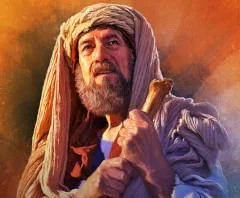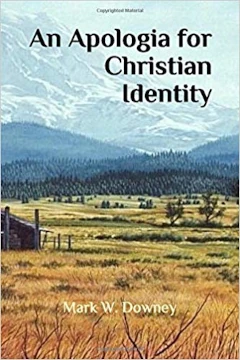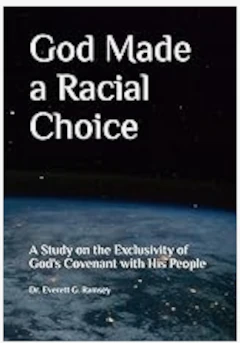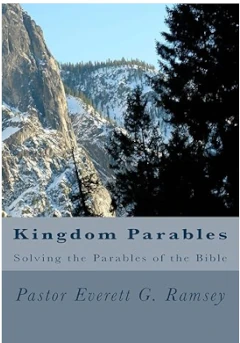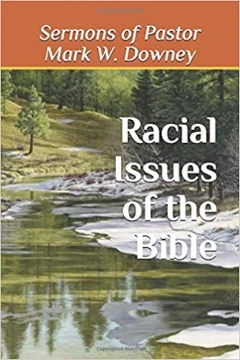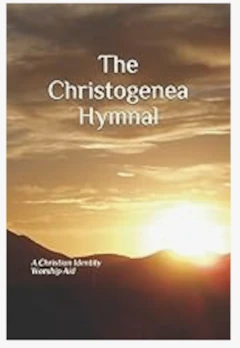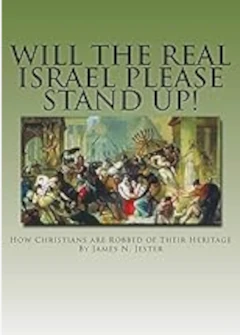Hadassah
Video file
By Pastor Don Elmore
In the back of the book, Primo-genesis...the story the Bible tells, on page Plate 11, written by Howard B. Rand, we find the following chart (see page 6):
Esau -- Adah (one of his Canaanite wives)
/
Eliphaz – Timna – (daughter of Seir the Horite)
/
Duke Amalek – We have the origin of the Amalekites, who were the first to attack Israel when they came out of Egypt in the Exodus.
Thus, the Amalekites were descending from Esau and are now called “Jews.”
From Smith Dictionary:
Agag: Possibly the title of the kings of Amalek, like Pharaoh of Egypt. One king of this name is mentioned in Numbers 24:7, and another in 1 Samuel 15:8, 9, 20, 32. The latter was the king of the Amalekites, whom Saul spared contrary to Jehovah’s well-known will. Exodus 17:14 and Deuteronomy 25:17. For this act of disobedience Samuel was commissioned to declare to Saul his rejection, and he himself sent for Agag and cut him in pieces (B.C. about 1070.) Haman is called the AGAGITE in Esther 3:1, 10; 8:3, 5. The jews consider him a descendant of Agag the Amalekite.
Amalekites: a nomadic tribe of uncertain origin, which occupied the peninsula of Sinai and the wilderness intervening between the southern hill-ranges of Palestine and the border of Egypt. Numbers 13:29; 1 Samuel 15:7; 27:8. Their wealth consisted in flocks and herds. Mention is made of a “town,” 1 Samuel 15:5, but their towns could have been little more than stations or nomadic enclosures. The Amalekites first came in contact with the Israelites at Rephidim, but were signally defeated. Exodus 17:8-16. In union with the Canaanites they again attacked the Israelites on the borders of Palestine, and defeated them near Hormah. Numbers 14:45. Saul undertook an expedition against them. ! Samuel 14:48. Their power was thenceforth broken, and they degenerated into a horde of banditti. Their destruction was completed by David. 1 Samuel 30:1-17.
Ed.--IF THIS IS TRUE THEN HOW COULD HAMAN HAVE BEEN A DESCENDANT?
Haman: the chief minister or vizier of King Ahasuerus. Esther 3:1. (B.C. 473). After the failure of his attempt to cut off all the jews in the Persian empire, he was hanged on the gallows which he had erected for Mordecai. The Targum and Josephus interpret the description of him—the Agagite—as signifying that he was of Amalekitish descent. The jews hiss whenever his name is mentioned on the day of Purim.
The following is copied from a reformed Jewish synagogue website. It is amazing what it says:
The minor holiday of Purim occurs on the 14th of the Hebrew month of Adar; FEBRUARY—MARCH.
Purim is celebrated by poking fun at ourselves and our jewish Institutions, throwing synagogue decorum out the window, dressing in costume, reading the Book of Esther, exchanging gifts of food, giving charity to the poor, and general silliness. The entire month of Adar, and not just Purim itself, is a time for silliness and humor. Purim is the holiday that proves Judaism has a sense of humor.
The story of the events Purim celebrates can be found in the Book of Esther in the Bible. This story relates the downfall of the vicious anti-Semite Haman, prime minister of ancient Persia, who sought to murder all the jews of that land. Most non-Orthodox Judaica scholars are of the opinion that Esther is fictional. Purim perhaps started as a Babylonian holiday that eventually became integrated into Judaism. When and how this occurred is not exactly known. There is decent evidence suggesting that the Maccabeus of the [true] Hanukah story (circa 265 B.C.E.) didn’t celebrate Purim.
Purim evolved into an important holiday. Jews surrounded by anti-Semitism took great joy in a holiday that reminded them that the anti-Semites didn’t always win.
[Ed.—Who is anti-Semitic? Israelites are Semitic; Arabs are Semitic; most Jews are not Semitic.]
Does it make sense to celebrate the anniversary of events we believe are FICTIONAL? Even though the “Haman” of the story is likely FICTIONAL, there have been too many real-life “Hamans” during the course of Jewish history. History has made the story relevant and compelling, even if it is not true.
The service for Purim is most unusual. Dressing is silly costumes are encouraged. Interrupting the service with noise-making devices is encouraged. Decorum is out, inanity is in. During the service, an abridged version of the Book of Esther is read…The Reform Purim service is very child friendly, with it slack of decorum and condensed reading of Esther.
The tradition of exchanging gifts of food on Purim is called mishloach manot. The food should be ready-to-eat; baked goods are a popular choice. This practice is prescribed in the Book of Esther 9:22.
If Purim did indeed originate as a Babylonian holiday, the tradition of giving charity to the poor is indubitably a Jewish twist added to the Babylonian original. One nice way people coming to Beth El’s Purim service can implement this tradition is to bring a donation of canned goods for the shul’s Food Pantry Box. Giving charity on Purim is prescribed in the Book of Esther 9:22. Of course, Judaism demands doing charity year-round, but we make a particular point of doing some on Purim.
Purim is a wild and crazy holiday. The rabbis of the Talmud, usually a quite sober group, say to drink so much on Purim that one can’t tell the difference between blessings Mordechai (the Jewish hero of the story) and cursing Haman. We Reform Jews believe the rabbis didn’t intend anyone to take them seriously about this, but were trying to suggest a high level of inane behavior on Purim. Many rabbis will be borrowing their spouse’s clothes this Purim.
[Ed.--Many synagogues take this very seriously…they get so drunk that they cannot tell the difference of whom they are suppose to cheer or boo.]
There are two other days of note before and after Purim. The “Fast of Esther” precedes Purim. This is the anniversary of the day the fighting against the anti-Semitic forces occurred; Purim is the day the victorious jews rested and celebrated. There is no explicit record in the Book of Esther that Esther actually fasted on this day. But the rabbis felt that any self-respecting Jewish leader would have fasted on the day when the jews were struggling to defend themselves against those attempting to carry out the edict to exterminate them. Therefore, Esther MUST have fasted, and the Jewish community should fast in commemoration of her fast. This fast is not exactly widely observed by Reform jews. The day after Purim if “Shushan Purim.” According to the Book of Esther, the fight against the anti-Semites in the capital city of Shushan took a day longer than in the rural areas. The jews in Shushan didn’t get to rest and celebrate until the day after those in rural areas. In commemoration of this, the Book of Esther says that Purim is celebrated a day later in cities, on the day now known as “Shushan Purim.” The rabbis decided that a “city” in this case means a city that had walls (if they are still standing or not) at the time of Joshua. Jerusalem celebrates on Shushan Purim.
On Purim the Book of Esther is read. When the reader comes to the name of Haman, the congregation cry out, “may his name be blotted out” or “Let the name of the ungodly perish.” When the Megillah is read through, the whole congregation exclaim, “Cursed be Haman; blessed be Mordecai; cursed be Zoresh (the wife of Haman); blessed be Esther; cursed be all idolaters; blessed be all Israelites and blessed be Harboash who hanged Haman.” In some synagogues they “Boo” and “Hiss” to Haman and “cheer” for Mordecai and Esther. They keep on doing this until they get so drunk that they cannot tell the difference as to who they are to boo and who they are to cheer.
Would Pastor Ramsey partake of this holiday? Absolutely not! And I know of a lot more Christians who believe that they would be guilty of sinning if they celebrated this ficticious day.
I now believe that the KJV has over 27,000 mistakes in it. Most are not significant; but some are. I believe that there are two books that should NOT be in the Bible—one of them is Hadassah—Esther.
Did anyone else believe this? Bertrand L. Comparet did.
He agrees with the Jewish synagogue that stated that most jews do not believe that the Book of Esther is TRUE—but it is FICTIONAL. I agree with them, too.
Comparet stated that:
The book is really about the battle between Babylon vs. Persian gods.
“Another curious thing about this book, of all the people mentioned, not one is ever mentioned in any known historical record. Not one is mentioned in any other book of the Bible”:
- Merduk or Merodach(Babylonian god) = Mordecai
- Ishtar (the Babylonian goddess of sexual intercourse) = Esther
- Marduk or Merodach and Ishtar were cousins = Mordecai and Esther were uncle/niece
- Humen (Persian pagan god) = Haman
- Vashti (Persian goddess) = Vashti (name of the kings’s wife)
- Kerisha (Persian pagan god) = Zeresh (Haman’s wife)
“The whole story of the Book of Esther is an embroidering of a Babylonian legend, about a conflict between Babylonian gods and Persian gods. In this conflict the Babylonian gods triumphed over the Persian gods. Remember, the Jewish Encyclopedia says, “The Jews’ well known skill in transforming and enriching traditional narratives was applied to the Book of Esther”
- Six month long drunken feast for nobles; followed by a week long drunken feast for the less important people who worked at the palace. Asked his wife (queen) to come and show off her beauty and she refused. Some of the men who were there getting drunk with the king said to him that since the queen refused the king’s command, then their wives would do the same. He should fire her and get another queen in her place. So, he did. And then he had all the most beautiful virgins brought to him and put into his harem. Esther was one of these virgins. Does our God have anything to say about drunkenness? Especially of those who are in rulership
- The virgins were to stay in his Harem until one year had passed. Esther was chosen to be the Kings’ new queen.
- WHAT ABOUT THE LAW OF INTERRACIAL MARRIAGES? Persian king with a Jewish wife? Would our Father bless this marriage? What happened to the people who lost their birthright for marrying someone like this?
- Everyone but Haman knew that Mordecai was Jewish. No one knew that Esther was Jewish? Why?
- When did this take place?
Esther 2:5-7: “Now in Shushan the palace there was a certain Jew, whose name was Mordecai the son of Jair, the son of Shimei, the son of Kish, a Benjamite; who had been carried away with Jeconiah (Jeconichin) king of Judah, whom Nebuchadnezzar the king of Babylon had carried away. And he brought up Hadassah, that is, Esther, his uncle’s daughter for she had neither father nor mother and the maid was fair and beautiful; whom Mordecai, when her father and mother were dead, took for his own daughter.”
The above verses in Esther are one of the most overlooked scriptures in the entire fictional story. It tells of when Mordecai was taken captive into Babylon.
2 Chronicles 36:9-10:
“Jehoaichin (Jeconiah) was eight years old when he began to reign, and he reigned three months and ten days in Jerusalem: and he did that which was evil in the sight of the LORD.
And when the year was expired, King Nebuchadnezzar sent, and brought him to Babylon, with the goodly vessels of the house of the LORD, and made Zedekiah his brother king over Judah and Jerusalem.”
Zedekiah ruled for 11 years…and then the third captivity with Babylon occurred.
Daniel 1:1 Daniel was taken captive (in the first one of three) in the reign of Jehoiakim—the father of Jeconiachin—11 years prior to Mordecai coming to Babylon. Then there were 11 more years, under his brother—Zedekiah, till the third captivity of Babylon. And after three more years of the reign of Nebuchadnezzar, his son, Belshazzar, (at least 14 years)…the Persians conquered Babylon. The reign of the Persians began. He was promoted as a leading official and soon Daniel was accused of breaking the law of praying to God instead of the King of Persia. And as a result of this, he was cast into the den of hungry lions…which God miraculously spared him…
Daniel 6:25-28 Then King Darius wrote unto all people, nations, and languages that dwell in all the earth: Peace be multiplied unto you.
I make a decree, that in every dominion of my kingdom men tremble and fear before the God of Daniel; for he is the living God, and steadfast forever, and his kingdom that which shall not be destroyed, and his dominion shall be even unto the end.
He delivereth and rescueth, and he worketh the signs and wonders in heaven and in earth, who hath delivered Daniel from the power of the lions.
So Daniel prospered in the reign of Darius, and in the reign of Cyrus, the Persian.
So how did the story of Esther take place during the reign of Xerses, who reigned from 486—465 B.C. when Daniel died around 530 B. C.? Mordecai was taken captive in the second captivity of Babylon. He would have been close to 100 years old when Xerses began his reign and Esther????
How could the story of Esther have taken place shortly after the Persians captured the Babylonians when Daniel was given the proclamation made by King Darius to all the people? It is impossible; it is fiction.
- Mordecai was able to go into the harem every day to talk with Esther—this would have been impossible both then and now.
- Mordecai was well known as a Jew – He was Esther’s uncle and he adopted her (she was an orphan); he visited her every day in the harem…How come no one knew that Esther was a Jew?
- How come this book of Esther repeatedly calls the people “Jews”? More than any book in the Old Testament; 43 to 31: Esther to 2 Kings, Ezra, Nehemiah, Jeremiah and Daniel.
- Haman was an Amalekite Agagite, a real Jew. He became prime minister. He became wealthy because of the lots … or craps, the rolling of dice. It was the early progenitor of Las Vegas that provided Haman with all his wealth. It seems that in America that is becoming more of a way of life: lotto’s, casinos, bingos, poker, sports gambling, etc.
- Mordecai the Jew, refused to bow down to Haman, the real Jew; very confusing. Jew would not bow down because he was a Jew? It is said that the Jews were in all 127 provinces…Not true.
- Haman offered to pay the king 10,000 talents of silver. A talent = 65 pounds of weight; 10,000 talents = 650,000 pounds = 10,400,000 ounces x $32.66 an oz. of silver = $339,660,000 (today’s value). Contrary to the actions of just about any ruler, or head of state, the king turned down the offer; he told Haman he could kill them for nothing.
- The Book of Esther never records that any of the Jews prayed to be delivered from the massacre of Haman.
- When Esther tells the king, her husband, that the proclamation that all Jews were to be killed (which would include her) the king is astonished to hear that any of this has happened. He just doesn’t know anything about it. He forgot all of his personal discussion with Haman over this issue and even his offer of $339,660,000 to bring it to pass….bad memory. He must have been an Alzheimer patient.
- Haman is hanged. Esther writes a new law. This is authentic, so far as it reveals the Jewish character. Remember that as soon as the Jews came to power in Russia, under the name of communism, they began murdering the Christians, including the women and children.
- When the Jews began their murdering, the Persians put up no resistance. The first day, 500 of the king’s officers and servants were killed. On the 14th day of Adar, the Jews massacred 300 more of the king’s officers and servants. They murdered 800 in the king’s palace and around 75,000 people including women and children. Then, after slaughtering all these innocent people, the Jews then confiscated all their property.
- All people mentioned in the Book of Esther, not one is ever mentioned in any known historical recorded. Not one is mentioned in any other book of the Bible.
- The best historical records we have on the subject, by the great Greek historian Herodotus (called the father of history), records that by Persian law the king could choose a wife only from among the seven noblest families of the Persian nation; he was forbidden not to pick up someone of another race. Race-mixing was out.
- Who celebrates the days of Purim? Jews…no one else. How? They get drunk, cross-dress and bring in noise makers and act in a genuine mood of silliness. They “cheer” Mordecai and Esther and “boo” Haman and the other “bad” people. Why? It gives them self confidence to destroy the people who they consider to be anti-Semitic. But Haman was one of the worst Jews and Mordecai they claim was a Jew? Most Jews admit the story is Fictional…and I do too.
They say that Mordecai and Esther are Jews -- we would say that they are of the House of Judah; of the tribe of Benjamin; Israelites. They say that Haman is an Agag/Amalekite--an enemy of the Jews. We would say that Haman is a Jew. As our Saviour said to them, "They are liars."
Would our GOD bless such a holiday? Drunkenness, cross-dressing, noise making, etc.; a day based on a fiction. Fictional characters, fictional events, fictional happenings—a day based on the Jewish victory against their enemy. A day that is truly against what the Bible says is going to happen in the future: "And the house of Jacob shall be a fire, and the house of Joseph a flame, and the house of Esau for stubble, and they shall kindle in them and devour them; and there shall not be any remaining of the house of Esau; for the LORD hath spoken it" (Obadiah 18).
May our GOD remember the covenant that He made with His covenant people! It is good that the Book of Esther is in the Bible: For it give us one way that we can know who His/our enemy is: Whoever keeps this day of Purim is one of the ways that we can know that they are our enemy.

